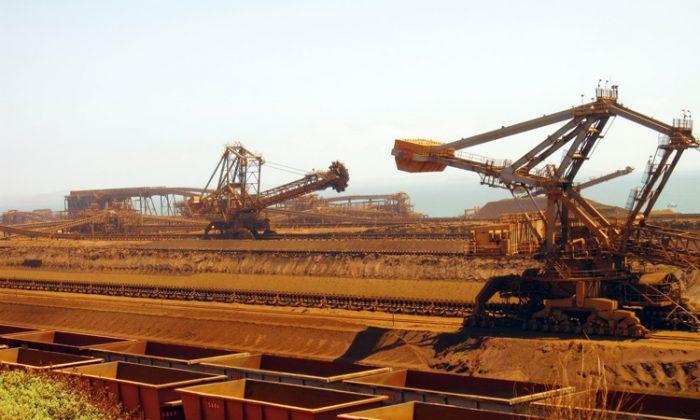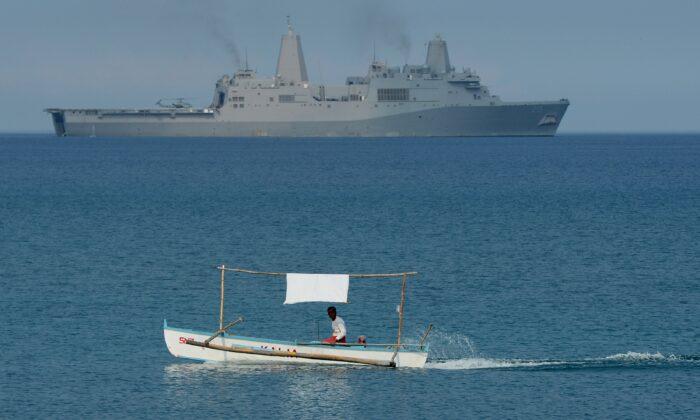Looking to fill a skills shortage in the country’s booming mining industry, the Australian government has announced new measures to encourage skilled American workers to migrate to Australia on temporary work visas.
Australian Minister for Tertiary Education and Skills, Sen. Chris Evans, said that skills needs in the energy, resources and infrastructure sectors were putting a big demand on the existing civil engineering and construction workforce.
“The reality is projections have our workforce going from about 30 or 35,000 currently to perhaps 75,000 or more workers required in those fields” he said in a joint press conference with Australian Immigration Minister Chris Bowen, and U.S. Ambassador to Australia Jeffrey Bleich.
Sen. Evans noted the slowdown in the American economy, saying the temporary migration program had already attracted “reasonable numbers of U.S. citizens” but mainly in professional areas.
“There’s been some interest for a while now among U.S. companies and large Australian employers, in attracting some skilled labor from the United States,” he said.
The U.S. Labor Department announced last week that the number of Americans claiming unemployment insurance (UI) had dropped to the lowest level since August 2008. However, the unemployment rate remains high in the United States, at around 8.3 percent.
Ambassador Bleich said the jobless rate was moving in “a positive direction” but there remained many skilled workers, particularly in the construction industry, looking for work in the United States.
“And so it is the perfect fit here, people speaking the same language, mostly, and with skills,” he said.
Currently skilled U.S. workers like licensed plumbers and electricians wanting to work in Australia need to be assessed onshore—a process that can take months between entry and starting work, Minister Bowen said.
“Under the new skills assessment process, U.S. workers will be assessed against Australian regulatory requirements before entering Australia, providing certainty to applicants and employers.”
Evans said that it was remote mining towns, particularly in Western Australia, that were most in need of skilled workers, but noted that workers in the Australian resource industry were “among the best paid workers in the world.”
“So I don’t think attracting people because of the wages will be an issue for us. I think there will be issues about people wanting to travel this far, about working away from home. ... That’s a personal decision people have to take,” he said.
The average wage for an electrical trades worker in the United States is around $53,000 a year, according to 2012 U.S. Bureau of Labor Statistics, while in Australia electrical, gas and water service workers earn around AU$80,000 ($82,352), the Australian Bureau of Statistics reported in 2011.
Wages are also higher than average in the resource industry because of the boom.
In order to promote the measure, the Australian government is running a program of Skills Australia Needs expos in the United States, to attract skilled workers. The first will take place in Houston, Texas, May 19 and 20.
However, Minister Bowen said applications for the new measures are expected to open from mid-April.
Licensed plumber Robert Klimek from Maryland believes coordination between the two countries and swapping skilled trades is a good thing “if there is enough work and the wages are fair,” he told The Epoch Times.
Klimek recalled a friend of 20 years ago who had worked in the bio-medical field and had taken up an offer of good wages and all paid travel to New Zealand, near Australia.
Klimek said he never saw him again. “He is still there.”
As for converting to the metric system—which Australia embraced in the ‘60s—and dealing in centimeters instead of inches and kilograms instead of pounds, that shouldn’t be a problem Klimek said, “Forget the rule, just get out a stick.”
“No, just get out your converter,” he said with a wry grin, noting that international codes in plumbing and electrical trades were well established.
Klimek said he would personally not be going to Australia as he had more than enough work around Maryland, Virginia, and Washington, D.C, which he described as a region of America almost recession proof, adding, “You go anywhere else in the United States, its tough to get work.”
Opportunities for Veterans
Ambassador Bleich said he would make sure that U.S. veterans knew of the initiatives in Australia.
As a separate initiative, The Australian Defense Force (ADF) has also been encouraging U.S. soldiers and officers to apply across a range of military sectors, including for officers, aviation, artillery, nursing, intelligence corps, and transport; and for soldiers, riflemen and ground crew, plus electrical aviation, ammunition and telecommunications technicians.
Applicants are requested to apply via the ADF website by June 2012 year.
U.S. Defense Secretary Leon E. Panetta proposed a $487 billion cut in defense spending over the next decade to reduce the budget deficit. Combined with the U.S. withdrawal from Iraq and the draw down in Afghanistan, the spending cuts will see the U.S. Army reduce its active duty force by 72,000 and its Marine Corps by 20,000 over the next five years, according to a statement from the Pentagon.









Friends Read Free